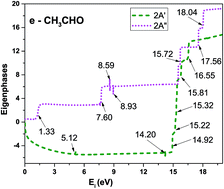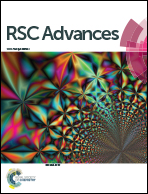Electron induced chemistry for acetaldehyde
Abstract
A detailed theoretical study is carried out for electron interactions with acetaldehyde (CH3CHO) with impact energies ranging from 0.01 to 5000 eV. Owing to the wide energy range we have been able to investigate variety of processes and report data on Dissociative Electron Attachment (DEA) through resonances, vertical electronic excitation energies, differential, momentum transfer, ionization and total cross sections (TCS) as well as scattering rate coefficients. In order to compute TCS we have employed ab initio R-matrix method (0.01 to ∼20 eV) and the spherical complex optical potential (SCOP) method (∼20 to 5000 eV). The R-matrix calculations are performed using close coupling method employing static exchange plus polarization model. We have employed different target models and basis sets to study their effect on the target parameters as well as total cross sections. We observed two strong resonances, one at 1.33 eV which corresponds to 2A′′ symmetry with a width of 0.1726 eV which is in agreement with 1.30 predicted earlier experimentally by van Veen et al. and other resonance at 10.03 eV of 2A′ symmetry with 0.0688 eV width which is close to 10.00 eV reported experimentally by Szymanska. The first peak corresponds to capture of an electron in to the lowest vacant π* orbital of the carbonyl group while the second corresponds to σ* core excited shape resonance which is responsible for the O− fragment. We observed many fragments of CH3CHO in our eigenphase sum study which are in accordance with the earlier reported data. The scattering rate coefficients and theoretical TCS data beyond 30 eV are reported for the first time. Further, no experimental data for TCS is available beyond 400 eV to the best of our knowledge. We have compared all our results with available data in the literature and found overall good agreement. Due to dearth of TCS data for acetaldehyde, we have also compared the TCS of acetaldehyde with its analogue targets such as formic acid, formaldehyde, formamide and ethylene oxide and drawn conclusions.



 Please wait while we load your content...
Please wait while we load your content...